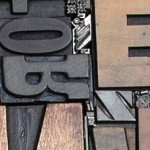When it comes to logo design, the design itself isn’t vital. “What?” you ask! “After writing nine posts in this series on logo design, you’re going to end it by saying the design isn’t important!?”
Growing up, there was this local carpet store that ran a series of television spots featuring a guy named Lou. I assume he was the owner. Every spot featured the phrase “Hey Lou, what’s new?” He would then launch into something ridiculous. I remember a spoof on Billy Crystal and his “You look mahvelous” catchphrase. The most memorable one featured Lou adding his own carpet-themed lyrics to the Ghostbusters theme song.
The ads were cheesy—really cheesy. But they were memorable, and they ran a lot! Was it a successful ad campaign? I can’t imagine that it was not. Were they good ads? How do I answer that? If they were successful, how can I say no? They were certainly rough around the edges and they didn’t include much helpful information. But everyone knew the name of this carpet store.
The point is this. While the ads themselves weren’t very good, they were used very well. I would call them a raging success.
So am I serious when I say design isn’t important when it comes to logo design? Of course not. But I want to emphasize that even a bad logo can be successful if used well.
That’s not to belittle the role of the design. Instead, I’m emphasizing the crucial role of how the logo is used. It’s like when I build a great website for somebody, but it’s never promoted. Sure some folks will find it via Google if I use smart search engine optimization techniques, but not as many as if it was publicized and shared in various ways.
This is marketing, and it will usually be out of your hands as a designer. The client will approve the logo, you’ll give them the files and you’re done. You may design letterhead, business cards, and ads, but it normally doesn’t go much beyond that. And large companies don’t need you to do more than that. But smaller companies often welcome a bit of advice. And when it comes to using the logo you just designed, they need to keep three things in mind: consistency, commonness, and creativity.
Consistency: The logo needs to be used the same way each time it appears. If the logo is always centered on the page, make that practice consistent. Maybe it’s never to appear on top of an image. There could be any number of rules, and that’s why larger companies create logo usage guidelines. This can be a good practice for small companies as well.
Commonness: The more people see the logo, the more the company will be recognized and remembered. Make it common. Allow it to be seen frequently by the public. That comes down to budget, so use that budget wisely, keeping frequency as a goal.
Creativity: There’s no blueprint for creativity, so I can’t provide too much direction here. But a company needs to know itself and understand what sets it apart from its competitors. With that (and the budget) in mind, how can the logo be used creatively? Remember, creative doesn’t mean crazy! More often than not, creative solutions are simply smart.
I’ve seen it many times. Bad logos used well can be very effective (and at times they even grow on me). And if that’s the case, imagine what a well-designed logo can do!
I hope this series has been helpful to those of you just starting out in the field of design. And maybe there have been some good reminders for those of us who have been designing for years. I know it’s been helpful for me to work through these concepts.



